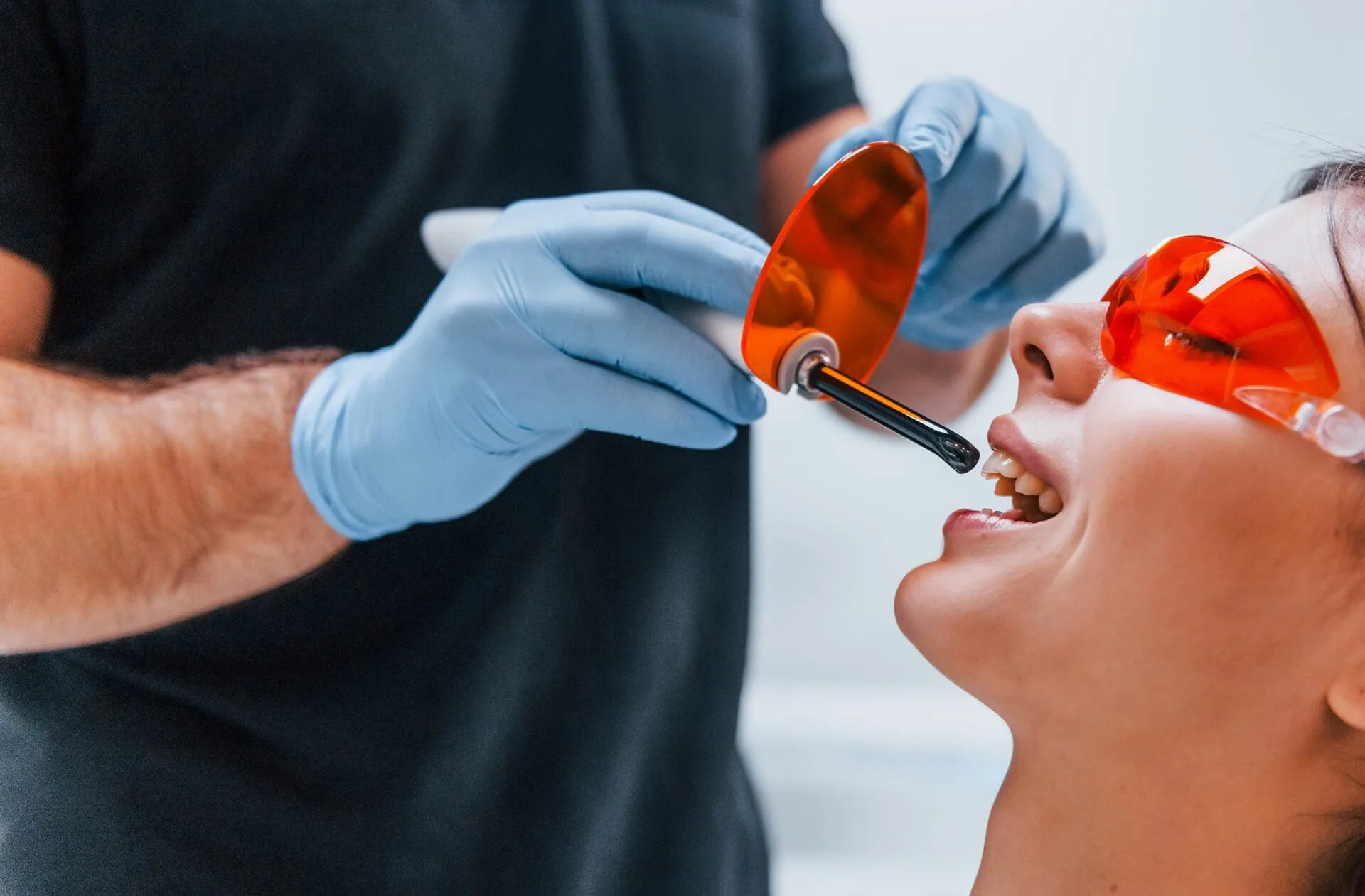Understanding the differences between tooth bonding, veneers, and crowns is crucial when considering cosmetic dental procedures. These treatments can transform your smile, but choosing the right one can feel overwhelming. Each option offers unique benefits and limitations, tailored to specific dental needs.
In this article, you’ll learn the distinctions between these three popular dental procedures. We’ll explore their processes, costs, durability, and how they impact the aesthetics of your smile. With this knowledge, you’ll be better equipped to make an informed decision about which treatment is right for you.
Have you ever stood in front of a mirror, unhappy with your smile, and wondered if there’s a solution that fits your needs and budget? You’re not alone. Many people face this dilemma, unsure of which dental option to choose. We’re here to help simplify this decision. By breaking down the key differences between tooth bonding, veneers, and crowns, we aim to provide clarity and peace of mind. Imagine feeling confident and informed as you discuss options with your dentist. That’s what we’re here to achieve.
Key Takeaways
- Tooth bonding, veneers, and crowns each serve different dental needs. Bonding is great for small fixes, veneers for major cosmetic changes, and crowns for repairing damage.
- The material, how long the procedure takes, and how long it lasts vary for each option. Bonding is quick and less costly but doesn’t last as long as veneers or crowns.
- Your choice depends on what you need for your teeth, how much you can spend, and the look you’re going for.
- Good habits and regular dental care are important no matter which treatment you choose. This helps keep your teeth looking good and lasting longer.
- Talking to your dentist is the best way to figure out which option is right for you. They know a lot about teeth and can help you decide.
Comparative Analysis: Tooth Bonding vs. Veneers vs. Crowns
When considering cosmetic dental procedures, it’s essential to understand the differences between tooth bonding, veneers, and crowns. Each option caters to different needs and offers unique advantages. Let’s break down these procedures to help you determine which might be the best fit for your dental goals.
Direct Comparison
| Factor | Tooth Bonding | Veneers | Crowns |
| Material | Composite resin that matches tooth color | Porcelain or composite resin | Porcelain, ceramic, metal, or combinations |
| Procedure Time | Often completed in one visit | Two visits (preparation and application) | Two visits (preparation and fitting) |
| Durability | 3 to 10 years, depending on care | 10 to 15 years | 15 years or more, with proper care |
| Cost | Most cost-effective option | More expensive due to materials and labor | Highest cost, especially for porcelain |
| Aesthetic Outcome | Best for minor cosmetic changes | Ideal for a significant cosmetic overhaul | Balances cosmetic improvement and structural repair |
- Material: The choice of material impacts both the appearance and longevity of the procedure. While tooth bonding uses a simple composite resin, veneers, and crowns use more durable materials, offering a longer-lasting solution.
- Procedure Time: Tooth bonding’s quick, single-visit procedure is appealing to those seeking a fast solution. Veneers and crowns require more time due to their complex fabrication and fitting processes.
- Durability: If you’re looking for a long-term solution, crowns and veneers offer greater durability compared to tooth bonding. This means fewer visits to the dentist for repairs or replacements in the long run.
- Cost: While cost is an important consideration, it’s crucial to balance it with the procedure’s benefits. Bonding is more budget-friendly, but veneers and crowns offer more extensive improvements.
- Aesthetic Outcome: Your desired aesthetic outcome will greatly influence your choice. For subtle enhancements, bonding is sufficient. However, for a complete smile makeover, veneers or crowns are more suitable.
Understanding these differences will assist in making an informed decision about which dental treatment is best for you. It’s always recommended to discuss these options with your dentist, who can provide personalized advice based on your specific dental condition and aesthetic goals. In the next sections, we’ll explore each of these procedures in more detail.
Ideal Situations for Each Procedure
Each dental procedure – tooth bonding, veneers, and crowns – is designed to address specific dental issues. Understanding when to use each can ensure that you receive the most appropriate and effective treatment for your dental concerns.
Tooth Bonding: Perfect for Minor Repairs
Best Suited For: Tooth bonding is ideal for minor cosmetic dental issues. It is commonly used to fix small chips or cracks, close gaps between teeth, and improve the appearance of discolored teeth.
Why Choose Bonding: It’s a great choice if you’re looking for a quick and cost-effective solution for minor imperfections. The procedure is simple, usually requiring just one visit to the dentist, and involves minimal alteration to the natural tooth structure.
Veneers: The Go-To for Cosmetic Makeovers
Best Suited For: Veneers are best for those seeking significant cosmetic changes. They are excellent for altering the shape, size, color, and overall appearance of teeth. Veneers can address issues like severe discoloration, uneven teeth, and minor misalignments.
Why Choose Veneers: If you’re aiming for a complete smile transformation, veneers are your best bet. They offer a more permanent solution for aesthetic improvements and are custom-made to provide the desired appearance.
Crowns: Restoring Damaged Teeth
Best Suited For: Dental crowns are recommended for teeth that are significantly damaged or decayed. They are ideal for restoring a tooth’s shape, size, strength, and appearance. Crowns are often used following root canal therapy, for large fillings, or to repair fractured teeth.
Why Choose Crowns: Crowns are the preferred option when the structural integrity of a tooth is compromised. They not only improve the appearance of the tooth but also restore its functionality. Crowns are a durable solution, providing protection and strength to severely weakened teeth.
By considering the specific issues you wish to address with your teeth, you can better decide which procedure aligns with your dental needs. It’s crucial to consult with your dentist, who can evaluate your situation and recommend the most suitable option for your dental health and aesthetic desires. In the following sections, we’ll delve deeper into the details of each procedure to give you a clearer understanding of what to expect.
Procedure and Material
The procedure and material used in tooth bonding, veneers, and crowns significantly influence their effectiveness and suitability for different dental conditions.
Tooth Bonding
Tooth bonding is a straightforward and minimally invasive procedure. The dentist applies a tooth-colored composite resin to the affected tooth, shapes it to correct the imperfection, and then hardens it with a special light. This process usually takes about 30 to 60 minutes per tooth.
The composite resin used in bonding is versatile and can be closely matched to the natural color of your teeth. While it offers an aesthetic solution, it’s less durable than the materials used in veneers and crowns.
Veneers
The veneer process is more involved. Initially, the dentist removes a small amount of enamel from the front surface of your teeth to make space for the veneers. Impressions of your teeth are then taken and sent to a lab where the veneers are custom-made. On your second visit, the veneers are bonded to your teeth.
Veneers are typically made of porcelain or composite resin. Porcelain veneers are highly favored for their ability to replicate the light-reflecting properties of natural teeth and for their resistance to stains.
Crowns
Getting a crown involves two visits. During the first, the dentist reshapes and prepares the tooth, and takes impressions for the crown. A temporary crown is often placed. On the second visit, the permanent crown, custom-made in a lab, is fitted and cemented onto the prepared tooth.
Crowns can be made from various materials including porcelain, ceramic, metal, or a combination. Porcelain or ceramic crowns are popular for their natural appearance, while metal crowns are chosen for their strength, especially for back teeth.
Aesthetic Outcome
The aesthetic outcome is a primary consideration when choosing between tooth bonding, veneers, and crowns. Each of these treatments offers distinct visual results, catering to different cosmetic needs and preferences.
- Tooth Bonding: Tooth bonding is best suited for minor cosmetic corrections. It excels in repairing small chips, closing slight gaps, or masking minor discoloration. The composite resin used in bonding is carefully matched to your tooth color, ensuring a natural look.
- Veneers: Veneers are the choice for a significant cosmetic dentistry makeover. They can dramatically change the appearance of your smile, including the shape, size, color, and alignment of your teeth. Porcelain veneers, in particular, offer a translucent quality that closely mimics the look of natural tooth enamel.
- Crowns: Crowns are designed to cover the entire tooth, offering both restorative and cosmetic dentistry benefits. They can restore the shape and size of a damaged tooth while also improving its color and alignment. The materials used in crowns, such as porcelain or ceramic, can be tailored to match your natural teeth, providing a seamless look.
Durability and Longevity
An important aspect to consider when selecting a dental treatment is its durability and longevity. How long each option lasts can impact your decision, especially when considering the investment of time and money.
Tooth Bonding: Short-Term Solution with Careful Maintenance
Lifespan: On average, tooth bonding can last from 3 to 10 years. This range is influenced by the location of the bonding on the teeth and the patient’s oral habits.
Maintenance Tips: To extend the life of tooth-bonded areas, avoid habits like biting nails, chewing on hard objects, or using your teeth as tools. Regular dental check-ups and proper oral hygiene are essential to maintain the integrity of the bonding material.
Further reading: How Long Does Tooth Bonding Last?
Veneers: Longer-Lasting with Proper Care
Lifespan: Veneers typically last between 10 to 15 years. Porcelain veneers tend to have a longer lifespan due to their durability and resistance to staining.
Maintenance Tips: Maintain veneers by practicing good oral hygiene, avoiding excessive force or grinding, and wearing a mouthguard if needed. Regular dental visits are important for checking the condition of veneers and addressing any issues early.
Further reading: How Long Do Veneer Last?
Crowns: Durable Option with Longevity
Lifespan: Dental crowns can last 15 years or more, depending on the material used and the care they receive. Crowns made from porcelain or ceramic offer both aesthetic appeal and durability.
Maintenance Tips: To ensure the longevity of a crown, maintain excellent oral hygiene, avoid chewing hard foods or ice, and address any habits of grinding or clenching teeth. Regular dental examinations will help in monitoring the condition of the crown and the underlying tooth.
Further reading: How Long Do Crowns Last?
Making an Informed Choice: Bonding, Veneers, or Crowns
Choosing the right dental procedure – tooth bonding, veneers, or crowns – depends on various factors, including your specific dental needs, budget constraints, and aesthetic desires. This section will guide you through key considerations to help you make an informed decision that aligns with your oral health and cosmetic dentistry goals.
1. Assessing Your Dental Needs
Consider the severity and type of dental issues you’re facing. Tooth bonding is suitable for minor repairs, such as small chips or discoloration. Veneers are ideal for cosmetic dentistry improvements like correcting tooth shape or color. Crowns are necessary for more extensive damage or decay, offering both strength and aesthetic restoration.
Also, think about the long-term health of your teeth. If a tooth is weakened, a crown might provide the necessary protection, whereas veneers or bonding might be more prone to damage in such cases.
2. Budget Considerations
Understand the cost of each procedure. Tooth bonding is generally the most affordable, while veneers and crowns are more expensive due to the materials used and the complexity of the procedures.
Check if your dental insurance covers any part of the procedures and explore financing options if necessary. Some treatments might be partially covered if deemed medically necessary, while others might be categorized as cosmetic.
3. Aesthetic Goals
Reflect on what you want your smile to look like. If you’re seeking a complete makeover, veneers might be your best bet. For subtle improvements, bonding could suffice. Crowns are the middle ground, offering both functional and cosmetic benefits.
Consider how long you want the results to last. If you prefer a long-term solution and are willing to invest more initially veneers or crowns might be more suitable than bonding.
4. Lifestyle and Maintenance
Think about your daily habits that might affect your dental work. If you have habits like teeth grinding, a more durable option like crowns might be necessary.
Evaluate how much maintenance you’re willing to commit to. All options require good oral hygiene, but some, like veneers, might need more careful handling to avoid damage.
5. Consultation with a Dental Professional
The most crucial step is to consult with your dentist. They can provide personalized recommendations based on an examination of your teeth, your dental history, and professional expertise.
Have an open discussion about your expectations, concerns, and any questions you have regarding each procedure. Your dentist can help align your needs with the most suitable treatment option.
Embracing Your Smile: A Conclusion to Your Dental Journey
As we conclude, remember that the journey to a brighter smile, whether through tooth bonding, veneers, or crowns, is a personal one. Each option offers unique benefits, tailored to different dental needs and aesthetic desires. Whether you’re looking for a quick fix or a complete transformation, your choice should align with what feels right for your smile and your lifestyle.
Your dental journey doesn’t just end with choosing a procedure. It’s about maintaining your new smile with good oral hygiene and regular dental check-ups. And remember, your dentist is your ally, offering expert advice to guide you toward the best choice for your teeth. With the right care and decision, your smile can be a source of confidence and joy, illuminating your face and lighting up your life. Here’s to a future of smiling brightly and confidently!
Ready for a Radiant Smile?
At Soundview Family Dental, we understand that your smile is as unique as you are. If you’re considering enhancing your smile with tooth bonding, veneers, or crowns, we’re here to help guide you through your options. Our team is committed to providing personalized care that aligns with your dental needs and aesthetic goals.
Don’t let uncertainty hold you back from achieving the smile of your dreams. Take the first step towards a brighter, more confident you. Contact Us today at (425) 563-6360 to schedule your consultation and embark on your journey to a radiant smile with Soundview Family Dental.


